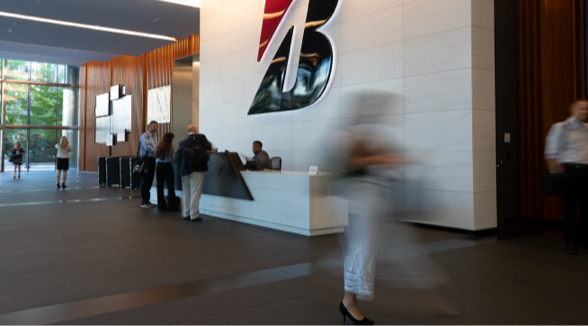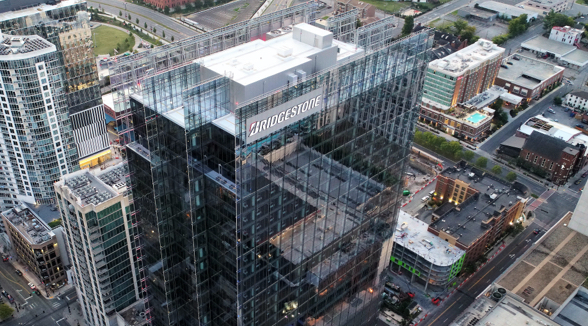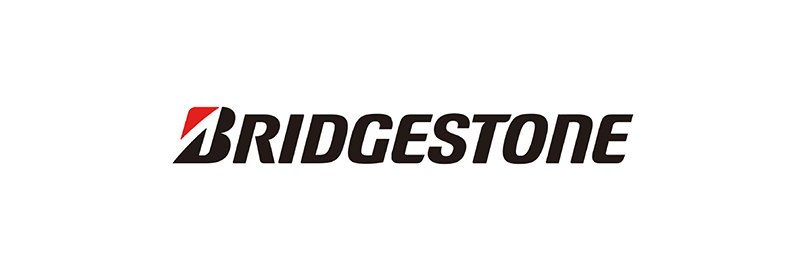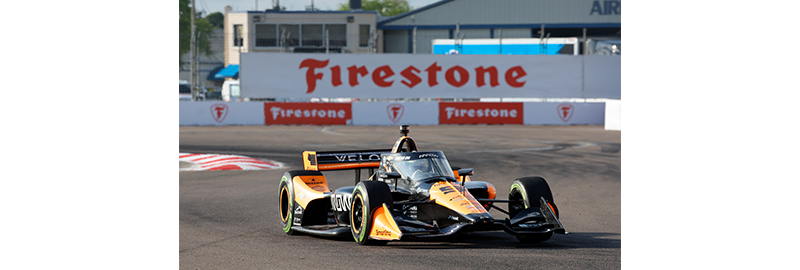NASHVILLE, Tenn. (APRIL 6, 2022) – Bridgestone Americas (Bridgestone) announced today it has produced a run of demonstration tires made with 75%*1 recycled and renewable materials, including synthetic rubber made with recycled plastics and natural rubber*2 harvested from desert shrubs grown domestically, in the Arizona desert. The company has completed production of 200 demonstration tires and is pursuing joint evaluation with automakers for use on the next generation of electrified SUVs and crossovers (CUVs).
The company’s relentless commitment to its goal of using 100% sustainable materials in its products by 2050*3 was underscored in remarks by Bridgestone Global CEO, Shuichi Ishibashi, during a February 16 briefing with media and industry analysts in Tokyo where Bridgestone also announced that it is pursuing a tire design utilizing 90% recycled and renewable materials for passenger cars.
Designed and engineered at Bridgestone’s Americas Technology Center in Akron, Ohio, the new tires were produced at the company’s Aiken County Passenger/Light Truck Radial Tire Plant in Graniteville, South Carolina. The Aiken plant is the first tire manufacturing facility in America to earn International Sustainability and Carbon Certification (ISCC) PLUS certification for transparency and traceability of sustainable raw materials including bio, bio-circular and circular-based material. Aiken also operates an on-site, 8-acre solar array that provides renewable energy to aid in powering the plant’s manufacturing operations.
“As we progress in our transformation to a sustainable solutions company, we are making incredible progress in the use of recycled and renewable materials to bring sustainable tire technology from the drawing board to the driveway,” said Paolo Ferrari, president & CEO, Bridgestone Americas. “The production and deployment of a 75-percent recycled and renewable materials tire technology marks a significant milestone as we accelerate our progress toward using fully sustainable materials in our products by 2050.”
75% Recycled and Renewable Materials
The tires contain a multitude of materials derived from recycled and biobased feedstocks. These include recycled monomer, produced with recycled materials including plastic bottles, to create the synthetic rubber in the tire1 as well as recycled steel, recycled carbon black, TPO*4-derived carbon black, and bio-based carbon black.*5 Multiple materials are ISCC PLUS certified.
The new tire is the first street tire to utilize natural rubber derived from the guayule desert shrub cultivated at Bridgestone’s guayule R&D agricultural facility in Eloy, Arizona. Bridgestone has spent more than 10 years and over $100 million on the research and development of guayule as an alternative to imported natural rubber from the Hevea Brasiliensis tree grown mainly in Southeast Asia. Guayule can serve as an alternative to existing crops, such as alfalfa and cotton, in America’s drought-stricken desert southwest, requiring as little as half the water to cultivate.
Guayule is part of Bridgestone’s plan to achieve carbon neutrality and make tires from 100% sustainable materials by 2050. The company is targeting commercial production of guayule-derived natural rubber by the end of the decade.
Bridgestone’s development of the 75% recycled and renewable materials tire aligns with the Bridgestone E8 Commitment that consists of 8 Bridgestone-like values starting with the letter “E” (Energy, Ecology, Efficiency, Extension, Economy, Emotion, Ease and Empowerment) to help realize a more sustainable society.
*1 38% Renewable, 37% Recycled Content
*2 The natural rubber contains hevea and guayule
*3 Sustainable materials are those that:
(1) come from resources with a continual supply;
(2) can be used as part of the business over the long term; and
(3) have a low environmental and social impact over their lifecycle from procurement to disposal
*4 Tire Pyrolysis Oil
*5 ISCC certified Bio, bio-circular and circular butadiene rubber, styrene butadiene rubber and oil extended styrene butadiene rubber. (Sustainable content is allocated using the ISCC mass balance approach).
















